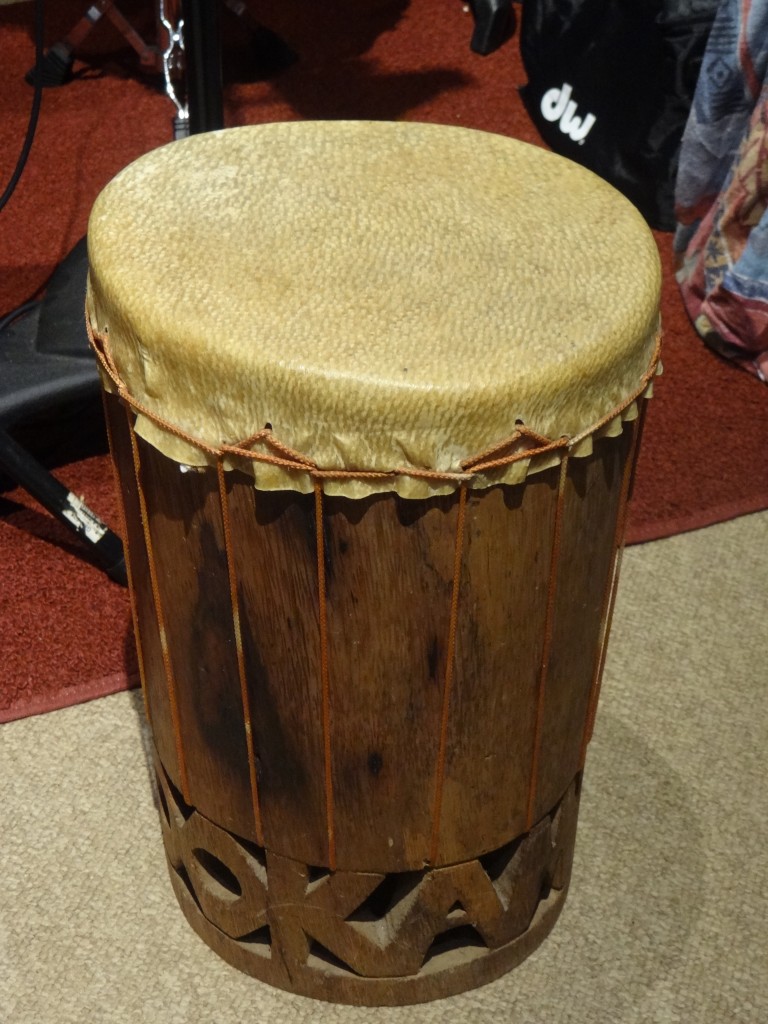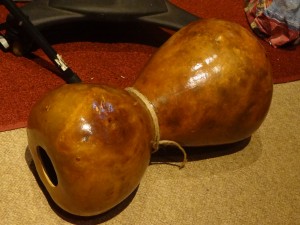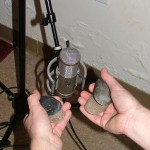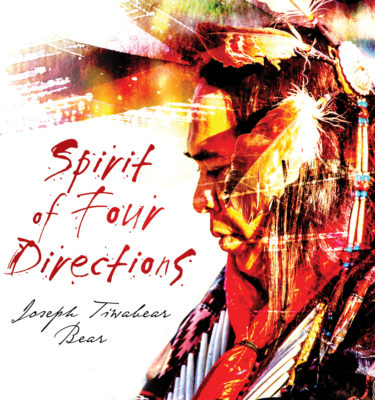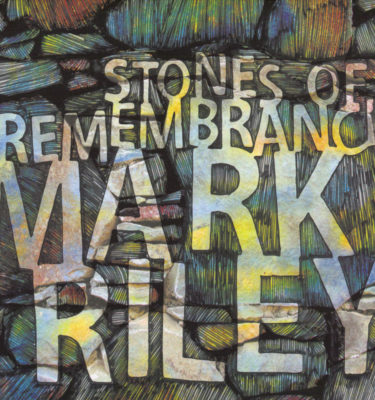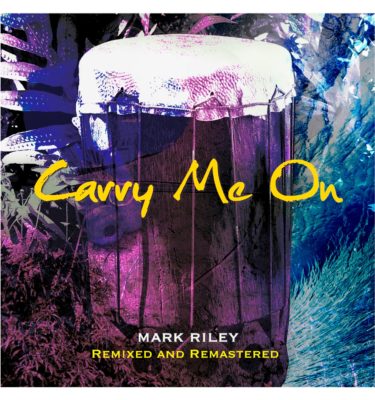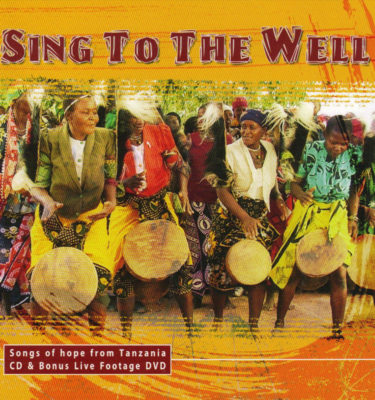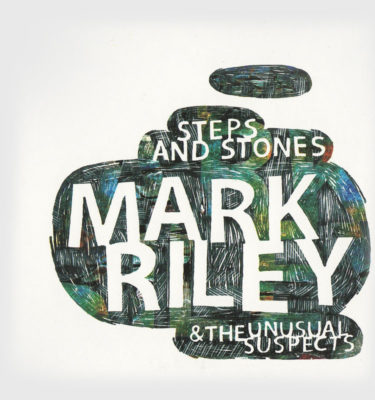Check out some of the traditional instruments that we used on Mark Riley’s recordings.
This is a pahu drum used in hula. I have seen two versions, a short one used in Hula (pahu hula) and a taller one, often called a temple drum (pahu heiau) apparently used in religious ceremonies. They play it with their fingers or hands or both. It is made from the bottom of a coconut tree or breadfruit wood and in the past often the skin was made of shark, nowadays hide and plastic are often used.
This gourd drum is known as the Ipu Heke or Ipu Hula, unique to Hawai’i, which is made out of two gourds: a larger, longer bottom gourd called the ‘Olo; and a smaller, far shorter gourd called the Heke, which means “top”. Played by slapping side and to get a bass sound, hitting the floor or folded kapa (Hawaiian fabric) with the base.
Ipu Heke
A smaller version called the Ipu heke ‘ole often used by the dancers. This is a smaller and more recent form of the ipu heke and was developed by modern dancers who wanted to hold the instrument and play at the same time as moving. The base gives a low sound.
Both the Ipu Hekes are used in Hula
These vibrant coloured feather gourd or coconut rattles are called ‘Ulī’ulī (another unique invention to the Hawaiian islands) used to help hula dancers tell their stories in exciting and creative ways.
‘Ulī’ulī
The Pū’ili is a split bamboo rattle and dancers often sat facing each other creating rhythms by hitting their bodies and the ground. The rustling instrument can sound like rainfall when tapped. They are often used in pairs.
“The player tapped his partner lightly on either shoulder or wrist, the movement always corresponding for each, effecting a pretty cross-action. I some hula puili the place on the ground between the partners was also tapped at points relatively identical for the position of the two players. At certain intervals the rattles were exchanged in mid air.” – Arts and Crafts of Hawaii – Te Rangi Hiroa (p416)
Pū’ili
Water-worn stones from rivers in which nature has done the shaping called ‘Ili’ili are used to accompany hula dances. They are used much like castanets with a pair of stones held in each hand.
‘Ili’ili
This picture show’s the playing position for getting a good sound.
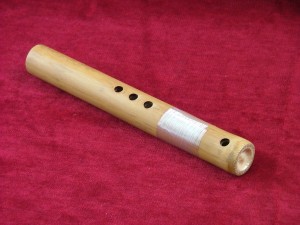 ‘Ohe hano ihu – is a Hawaiian nose flute getting its name from bamboo (‘ohe), instrument (hano) and the method of playing it with the nose (ihu). I have heard them with one, two and three holes. (I have both two holed and three holed versions). The Hawaiians believed that the breath coming from the nose is pure and innocent unlike that of the mouth which can say many bad things. Nose flutes were often used in private between lovers, some say that they were able to convey messages to each other.
‘Ohe hano ihu – is a Hawaiian nose flute getting its name from bamboo (‘ohe), instrument (hano) and the method of playing it with the nose (ihu). I have heard them with one, two and three holes. (I have both two holed and three holed versions). The Hawaiians believed that the breath coming from the nose is pure and innocent unlike that of the mouth which can say many bad things. Nose flutes were often used in private between lovers, some say that they were able to convey messages to each other.
Hawaiian conch shell trumpet.

